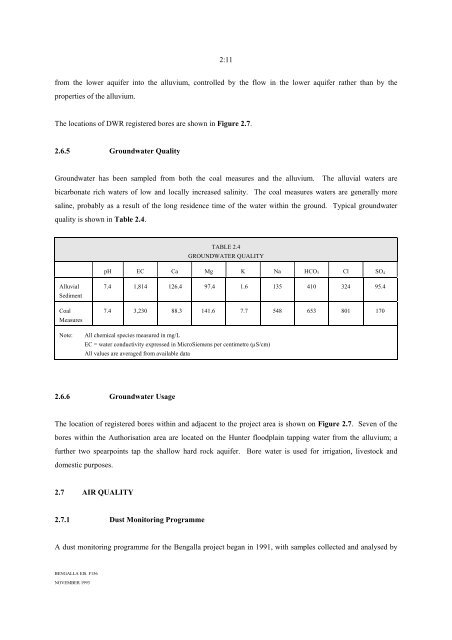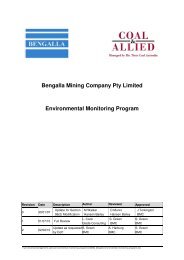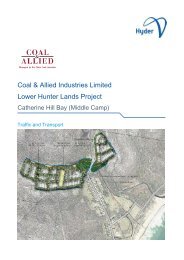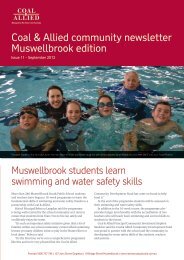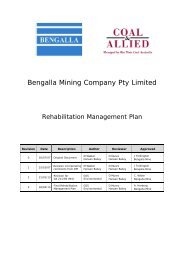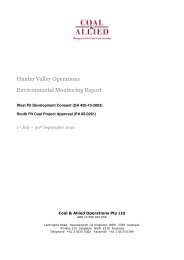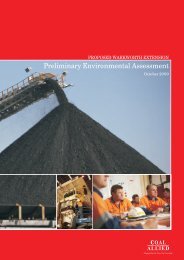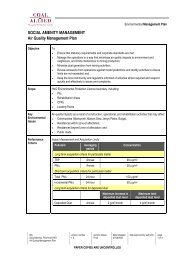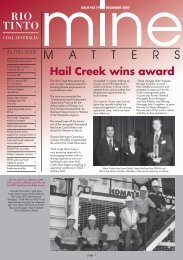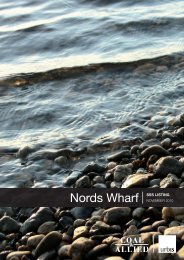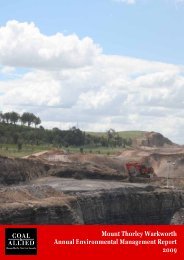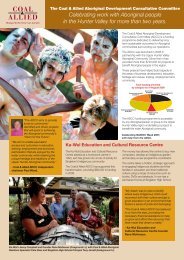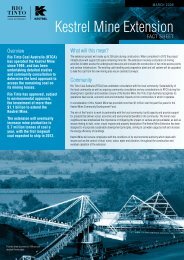Bengalla Mine Environmental Impact Statement (1993) - Part 1 of 3
Bengalla Mine Environmental Impact Statement (1993) - Part 1 of 3
Bengalla Mine Environmental Impact Statement (1993) - Part 1 of 3
You also want an ePaper? Increase the reach of your titles
YUMPU automatically turns print PDFs into web optimized ePapers that Google loves.
2:11<br />
from the lower aquifer into the alluvium, controlled by the flow in the lower aquifer rather than by the<br />
properties <strong>of</strong> the alluvium.<br />
The locations <strong>of</strong> DWR registered bores are shown in Figure 2.7.<br />
2.6.5 Groundwater Quality<br />
Groundwater has been sampled from both the coal measures and the alluvium. The alluvial waters are<br />
bicarbonate rich waters <strong>of</strong> low and locally increased salinity. The coal measures waters are generally more<br />
saline, probably as a result <strong>of</strong> the long residence time <strong>of</strong> the water within the ground. Typical groundwater<br />
quality is shown in Table 2.4.<br />
TABLE 2.4<br />
GROUNDWATER QUALITY<br />
pH EC Ca Mg K Na HCO 3 Cl SO 4<br />
Alluvial<br />
Sediment<br />
Coal<br />
Measures<br />
Note:<br />
7.4 1,814 126.4 97.4 1.6 135 410 324 95.4<br />
7.4 3,230 88.3 141.6 7.7 548 653 801 170<br />
All chemical species measured in mg/L<br />
EC = water conductivity expressed in MicroSiemens per centimetre (µS/cm)<br />
All values are averaged from available data<br />
2.6.6 Groundwater Usage<br />
The location <strong>of</strong> registered bores within and adjacent to the project area is shown on Figure 2.7. Seven <strong>of</strong> the<br />
bores within the Authorisation area are located on the Hunter floodplain tapping water from the alluvium; a<br />
further two spearpoints tap the shallow hard rock aquifer. Bore water is used for irrigation, livestock and<br />
domestic purposes.<br />
2.7 AIR QUALITY<br />
2.7.1 Dust Monitoring Programme<br />
A dust monitoring programme for the <strong>Bengalla</strong> project began in 1991, with samples collected and analysed by<br />
BENGALLA EIS. F156<br />
NOVEMBER <strong>1993</strong>


